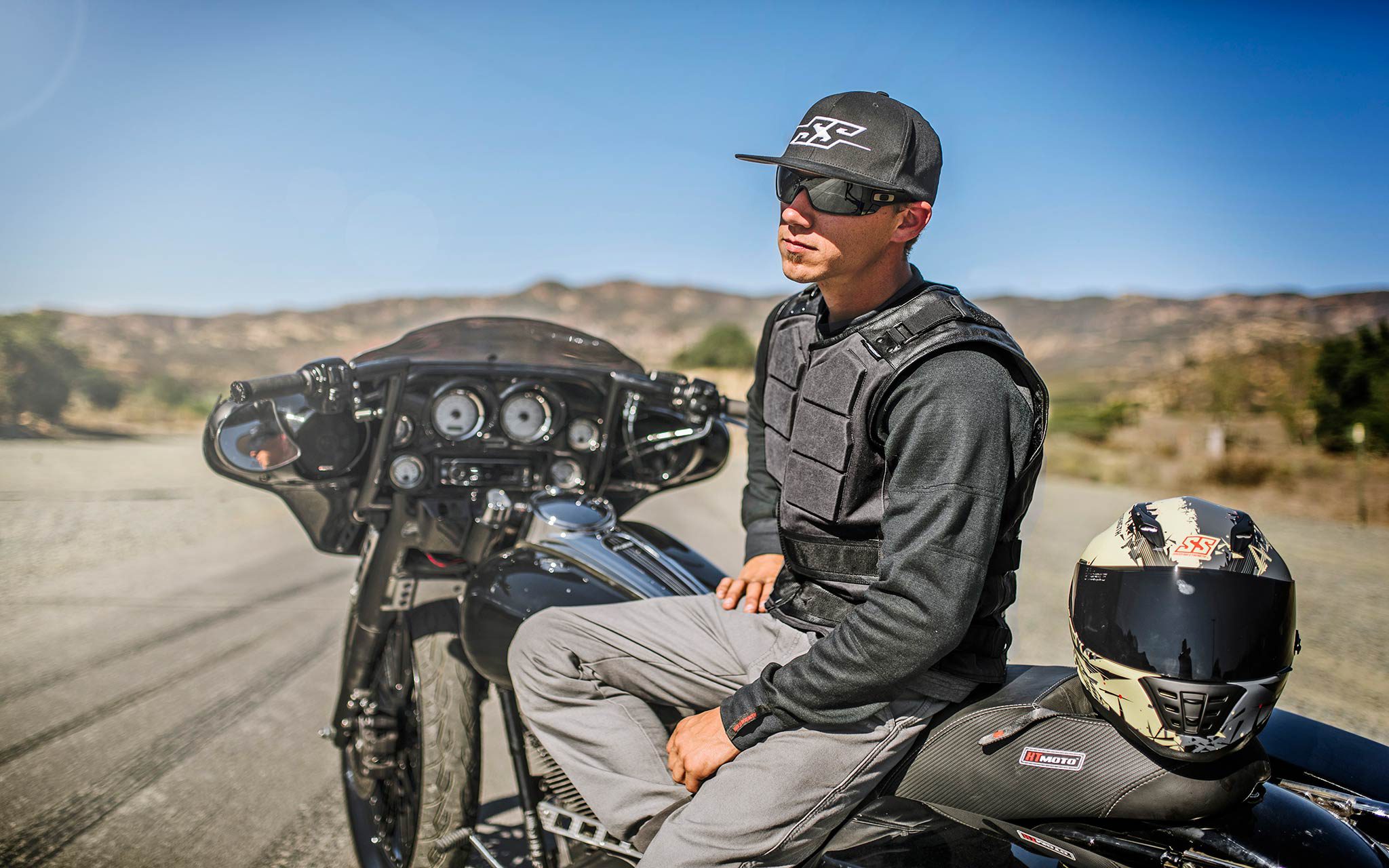What motorcycle riding gear is right for me? Part 2
It’s time for part 2 in my series on motorcycle riding gear. I’ll be talking about riding jackets, proper fitment and the most common types of materials used.
The different types of materials used to protect you from abrasion related injuries are leather, textile and mesh. I know from personal experience road rash is not something you ever want to deal with! Leather is still the top in abrasion resistance due to its tensile strength and because of the 1.0 to 1.3 mm thickness of the leather that most motorcycle jackets are made of. There are some cheaper leather jackets out there that are not as thick but you do get what you pay for. The very thin leather jackets you get at department stores are never stitched as well and are very thin so they will not offer the protection of a jacket made for motorcycle riding. The most common leather is cowhide although there are also kangaroo hide jackets and suits out there. Kangaroo leather has 10 times the tensile strength of cowhide and is 50% stronger than goatskin. You will not see many motorcycle jackets made with goat skin since it is better for gloves than jackets. Kangaroo leather jackets are also more for your racer group and tend to be very high end.
Textile and mesh jackets have come a long way. Textile refers to the man-made fibers that make up the jacket. These fibers are very abrasion resistant and can have benefits over leather depending on the type of jacket you get. This includes better breath-ability, water resistance/waterproofing, wind resistance and also tend to be lighter weight than their leather counterparts. The most common material used in the motorcycle industry is an AR 300 to AR 1000 rated denier fibers. The higher the rating the thicker and more abrasion resistant a jacket is. The big difference between a full textile and a mesh jacket is how much of the solid patches of denier covers the jacket. Mesh will let more air flow in at a cost of having less of the solid denier fabric on the jacket. Most mesh jackets will keep the AR denier fabric on the main impact points on a jacket. These points are your elbows, shoulders and sides of your torso. Mesh is most often used in summer weather jackets since it will keep you cooler. Leather and full textile jackets are better for spring and fall riding. Winter jackets are generally thicker textile, have warmer inner liners and are weather proof.
The most import part about a jacket is how it fits. An improperly fitted jacket will not protect you like it should. Different brands will fit differently due to how they are cut. The most common cuts are American and European. European fit is generally more of a V shape and tends to fit a thinner less muscular person. American fit larger more muscular people. A jacket should fit snug and not have too much room for layers underneath it. This keeps the jacket in place if you do go down and allows the jacket and armor to protect you properly. Many jackets have customizable fit options with different straps and Velcro tabs to adjust the jacket. I always find it a good rule to get the jacket you have to adjust the least. This allows for a best fit scenario.
I hope this was informative and helps you to make a better choice when you are ready for your new or first motorcycle jacket. In part 3 I will be talking about the different types of armor that you can get in jackets, pants, and body armor. As always, mention this blog to Erik or Wade at Sprocketz in Richmond, VA and get a special discount off your purchase. Keep the shiny side up and ride safe.



